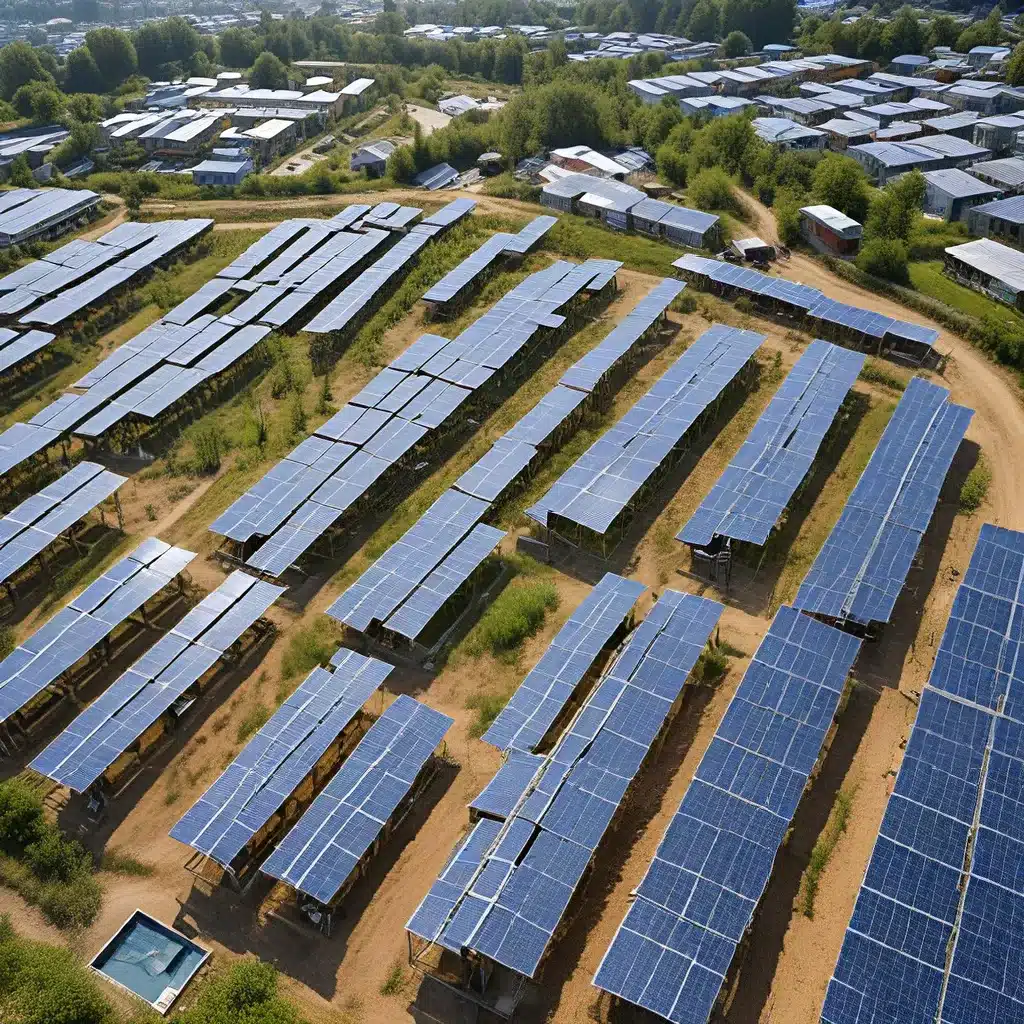
Microgrids are more than just a buzzy new energy trend – they’re a transformative solution that’s empowering communities to take control of their energy destiny. As we grapple with the growing impact of climate change and face the reality of an aging, unreliable power grid, these decentralized energy systems are emerging as a beacon of hope.
Let me tell you, I used to feel utterly powerless when the lights went out during an intense storm or a grid failure. But then I discovered the world of microgrids, and let me tell you, it’s changing the game. These self-sufficient, local energy networks aren’t just a nice-to-have – they’re becoming an essential tool for communities to ensure resilience, sustainability, and energy autonomy.
Microgrids: Redefining the Energy Landscape
Imagine a world where your neighborhood, campus, or industrial facility could generate, distribute, and manage its own energy, independent of the traditional power grid. That’s the beauty of microgrids – they offer a departure from the centralized, one-size-fits-all approach that has dominated the energy sector for decades.
Unlike the traditional grid that relies on large, remote power plants, microgrids operate on a smaller, more localized scale. They can incorporate a diverse range of renewable energy sources, such as solar, wind, and even hydrogen-powered fuel cells, to meet the specific needs of the communities they serve.
This decentralized model has far-reaching implications. For starters, it means that in the event of a grid disruption, your community can continue to power critical infrastructure like hospitals, emergency services, and essential businesses. No more relying on the whims of a distant utility company – with a microgrid, the power is quite literally in your own hands.
Empowering Communities, Fostering Resilience
But the benefits of microgrids go far beyond just keeping the lights on during a crisis. These systems are transforming the way communities approach energy, fostering a sense of empowerment and self-sufficiency that has far-reaching implications.
Take the Bronx, for example. After the devastating impact of Hurricane Sandy, this New York community came together to develop the Resilient Power Project – a microgrid that provides reliable power to critical infrastructure during emergencies. This isn’t just about preventing blackouts; it’s about strengthening the social fabric of a community and ensuring that even in the face of adversity, they have the resources to weather the storm.
Or consider the story of Kodiak Island, Alaska, a remote community that has traditionally relied on diesel generators for power. By developing a microgrid powered by wind and solar energy, the Kodiak Island Utility Cooperative is not only reducing emissions and greenhouse gases, but also lowering energy costs and fostering a more sustainable future for the island.
These examples illustrate the transformative power of microgrids in empowering communities to take control of their energy destiny. And it’s not just small, isolated communities that are benefiting – even large institutions like Princeton University have embraced the microgrid revolution, using these systems to produce clean electricity, curtail carbon emissions, and provide backup power during outages.
Overcoming the Challenges
Of course, the path to a microgrid-powered future isn’t without its challenges. Regulatory hurdles, financial barriers, and technical complexities can all pose significant obstacles to widespread adoption. But savvy communities and organizations are finding innovative ways to navigate these challenges.
Governments and organizations are stepping up with incentives and support to help disadvantaged communities access the benefits of microgrids. Programs like California’s Climate Investments and the Microgrids for Community Resilience initiative are providing grants and technical assistance to ensure that these valuable energy solutions reach those who need them most.
And on the technical front, the integration of Distributed Energy Resources (DERs) and hydrogen storage are helping to make microgrids even more efficient, sustainable, and resilient. By harnessing the power of renewable energy sources and long-duration energy storage, these systems are becoming increasingly robust and adaptable to the needs of communities.
The Future is Microgrid-Powered
As we look to the future, it’s clear that microgrids are poised to play an increasingly vital role in the energy landscape. These systems are not only empowering communities to take control of their energy destiny, but they’re also driving the transition to a more sustainable, resilient, and equitable energy future.
By reducing reliance on fossil fuels, improving air quality, and fostering environmental sustainability, microgrids are helping to mitigate the impact of climate change and create a healthier, more livable world for all. And with the continued advancements in renewable energy technology and energy storage solutions, the potential of microgrids is only going to grow.
But this isn’t just about the technology – it’s about the human impact. Microgrids are strengthening communities, promoting social cohesion, and empowering people to take control of their energy destiny. And as we navigate the increasingly complex and uncertain challenges of the 21st century, that kind of community-driven, resilient energy solution is more important than ever.
So, if you’re looking to power a brighter future for your community, I encourage you to explore the transformative potential of microgrids. It’s time to reclaim our energy independence and build a more sustainable, resilient world – one microgrid at a time.

